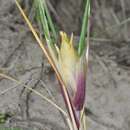en
names in breadcrumbs


The Eurytomidae are a family within the superfamily Chalcidoidea.
Unlike most chalcidoids, the larvae of many are phytophagous (feeding in stems, seeds, or galls), while others are more typical parasitoids, though even then the hosts are usually found within plant tissues. They are found throughout the world in virtually all habitats, and a few are considered pests.
They tend to be dull and not metallic, and heavily punctured, with very thick, collar-like pronota.
As of 2021, Eurytomid genera include:[1]
Buresiinae Lotfalizadeh et al, 2007[2]
Eurytominae Walker, 1832
Heimbrinae Burks, 1971
Rileyinae Ashmead, 1904
The Eurytomidae are a family within the superfamily Chalcidoidea.
Unlike most chalcidoids, the larvae of many are phytophagous (feeding in stems, seeds, or galls), while others are more typical parasitoids, though even then the hosts are usually found within plant tissues. They are found throughout the world in virtually all habitats, and a few are considered pests.
They tend to be dull and not metallic, and heavily punctured, with very thick, collar-like pronota.